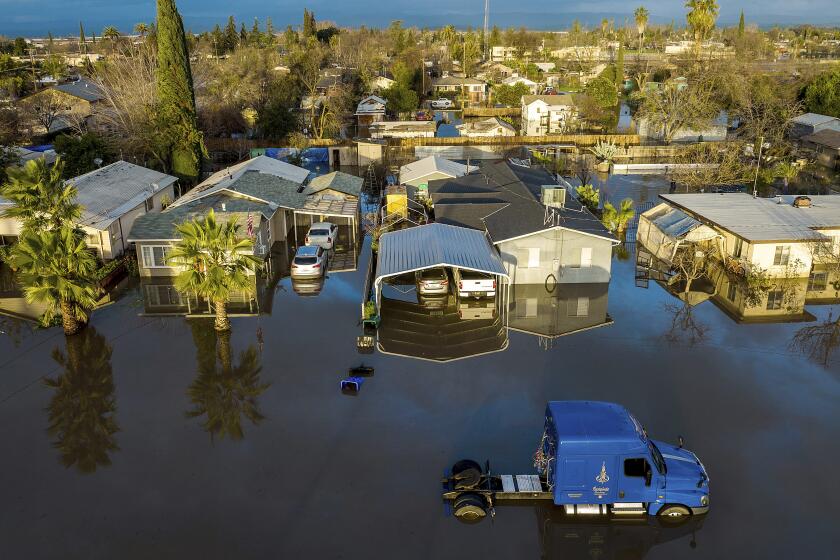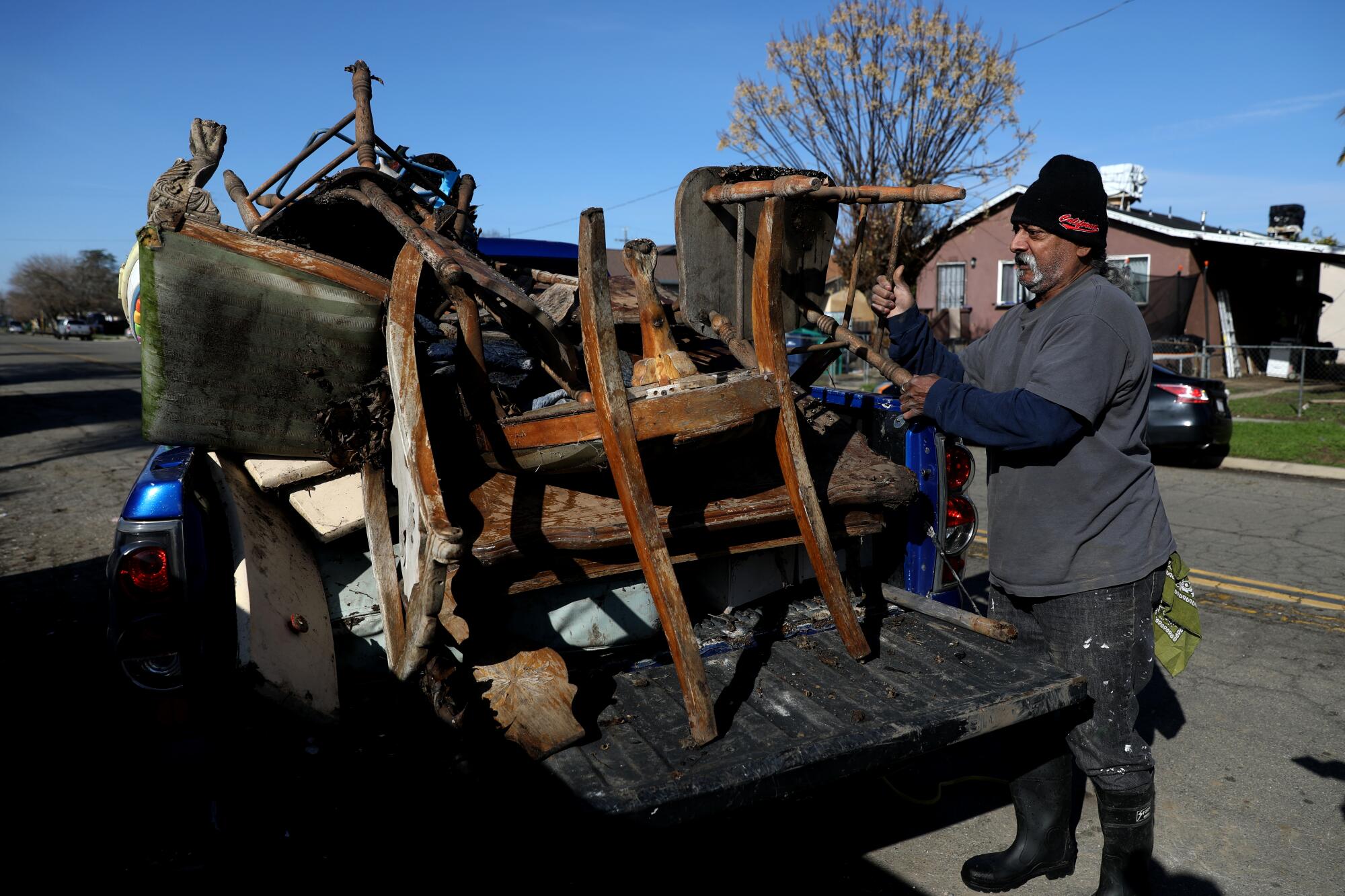
- Share via
PLANADA, Calif. — When Rudy Moreno first saw the texts from his relatives two weeks ago asking about the mandatory evacuation order in Planada, he didn’t even know that one had been issued. Much of the small town, made up of about 4,000 people east of Merced, had been flooded due to a breached levee during the storms that deluged the state at the start of the year.
But instead of joining the fleeing residents, the majority of whom had already left, Moreno headed straight to his childhood home on Amistad Street, where his older sister, Sylvia, still lived. They didn’t have flood insurance, and the rain was coming down hard.
Together, they worked on digging a trench from their backyard, which was already brimming with more than 2 feet of water, to their frontyard to keep the house from flooding. They used an electric pump and managed to keep the water at bay.
“We have never had a flood like this one,” said the 60-year-old Moreno, who moved to the town with his parents in 1969 and has remained ever since. “Planada has had some rain but nothing to the extreme that we had to evacuate. It was something out of the movies.”
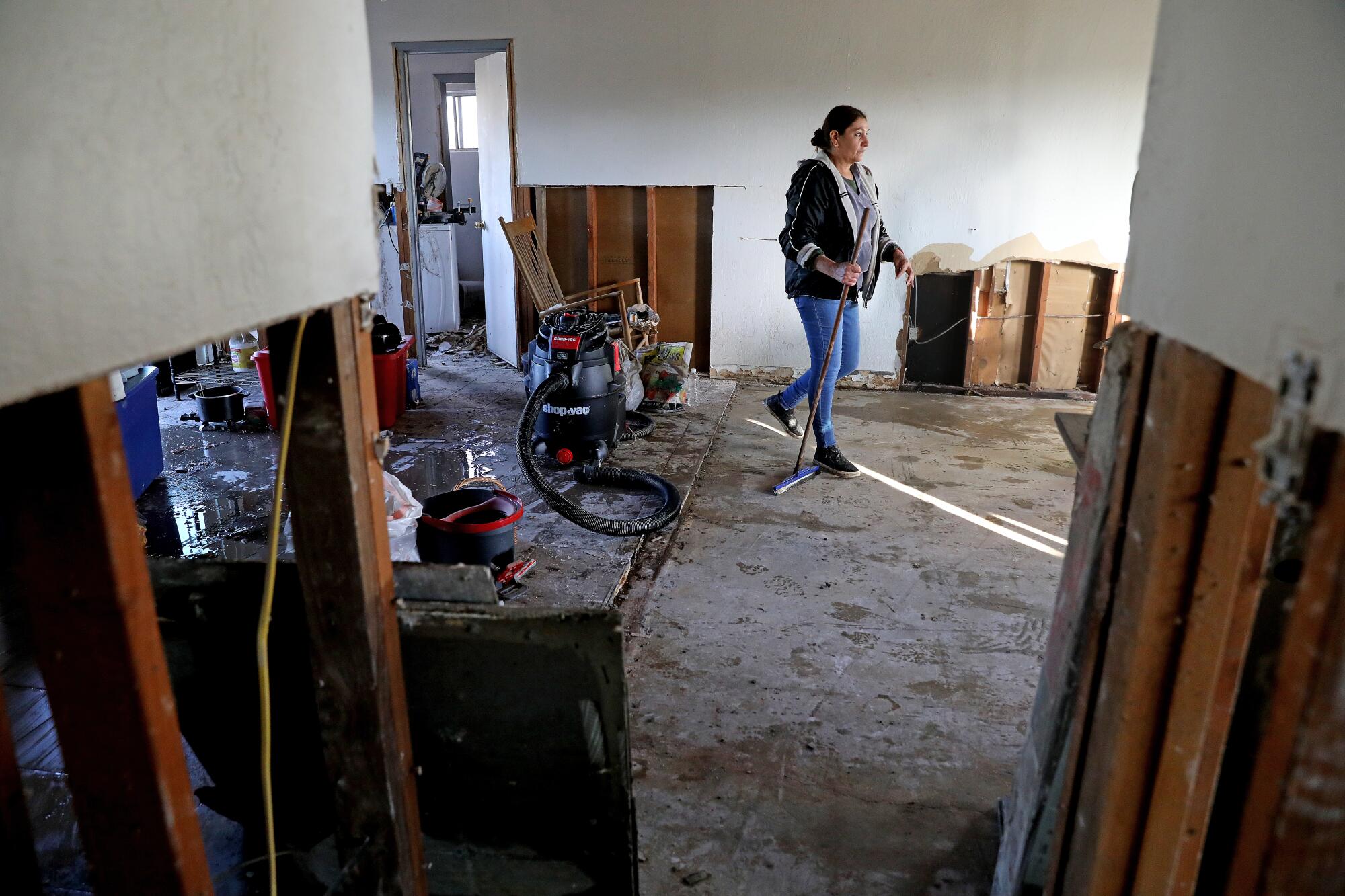
Right before the flood, the Morenos went into town to pick up some sandbags. When those ran out, they loaded up the truck with piles of the leftover sand and used plastic grocery bags to make their own.
By the time the worst was over, the rain had weakened the fence in their backyard and battered some couches and chairs. Sylvia Moreno, 67, decided to evacuate sometime during the storm, but her brother stayed behind, going days without power and heat. At one point, the water supply was contaminated with sewage and he could no longer use the tap, relying on only bottled water. If he hadn’t remained at the house, continuing to dig the trench deeper, he said the floodwaters would’ve seeped in through the back door and inundated the house.
“It’s a very sentimental thing for us because this is the home where all my brothers and sisters grew up,” Rudy Moreno said. “I was doing my best not to leave, and I was gonna do whatever it took to try to stay and make sure that it was gonna be OK.”
During the storms, which drenched most of California, the rain breached at least one levee along Miles Creek in Planada, causing the floodwaters to flow into a drainage canal and flood nearby streets, businesses and homes.
Planada, a tiny, mostly rural unincorporated community in Merced County, is majority Latino and mostly made up of renters, according to Merced County Supervisor Rodrigo Espinosa, whose district includes the town. Most of the residents are immigrants without documentation, live below the poverty line and don’t have flood insurance, he added.
Many of the people are also farmworkers and weren’t able to work for weeks during the relentless onslaught of rain, Espinosa said. Some residents are behind on rent, facing eviction or living in moldy homes with nowhere else to go.
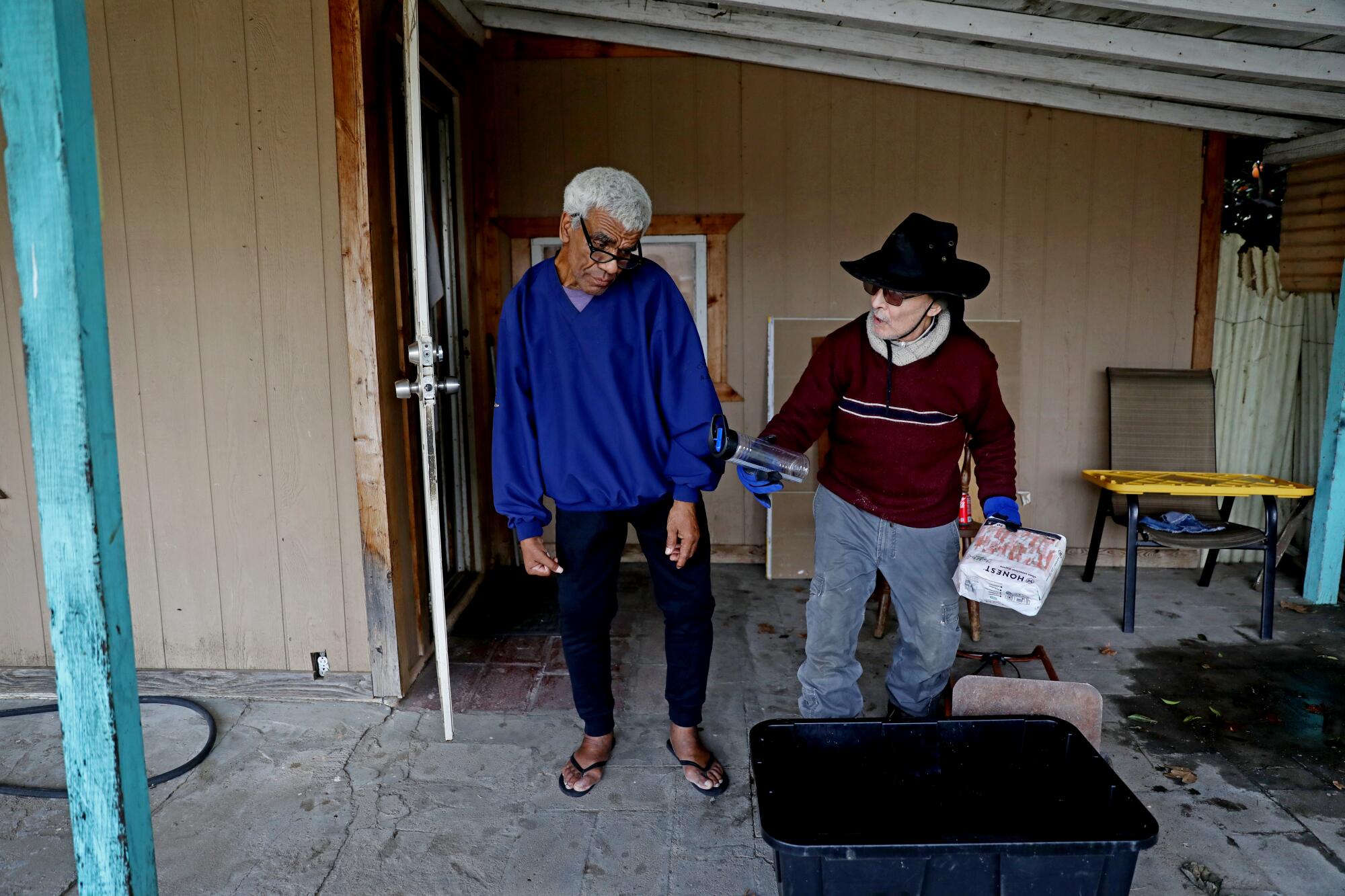
“The struggle is that this is a minority, low-income area, and we feel that people are going to forget about it and go away,” he said. “We need more support. This is not one week, two weeks, three weeks. This is going to be for the next six months. People are going to be struggling.”
Most of Planada evacuated during the storms, but Espinosa estimated that about 20% of the residents stayed behind.
“I think it’s because they’re not used to leaving,” he said. “It’s a sense of losing privacy or their personal rights. That’s where your fortress is, and sometimes they don’t want to leave — they’re so used to their area.”
Alicia Rodriguez, a longtime volunteer in the community, knew of at least 100 households that rode out the storms in their homes. All of them lived without power for days.
“They’re helpless, scared and concerned for their families and how to feed them,” she said in an interview last week. “They don’t have any hope.”
The evacuation warning, which was upgraded to a mandatory evacuation order during peak flooding, was downgraded and eventually lifted last week. Deputies had gone door to door to residents in the most affected areas and strongly urged them to leave, according to Merced County Sheriff’s Office spokesperson Michelle Oliver. In some cases, displaced residents were put in high-water-rescue vehicles and dropped off near buses, which then shuttled them to an evacuation shelter at the Merced County Fairgrounds.
“We have never had a flood like this one. Planada has had some rain but nothing to the extreme that we had to evacuate. It was something out of the movies.”
— Planada resident Rudy Moreno
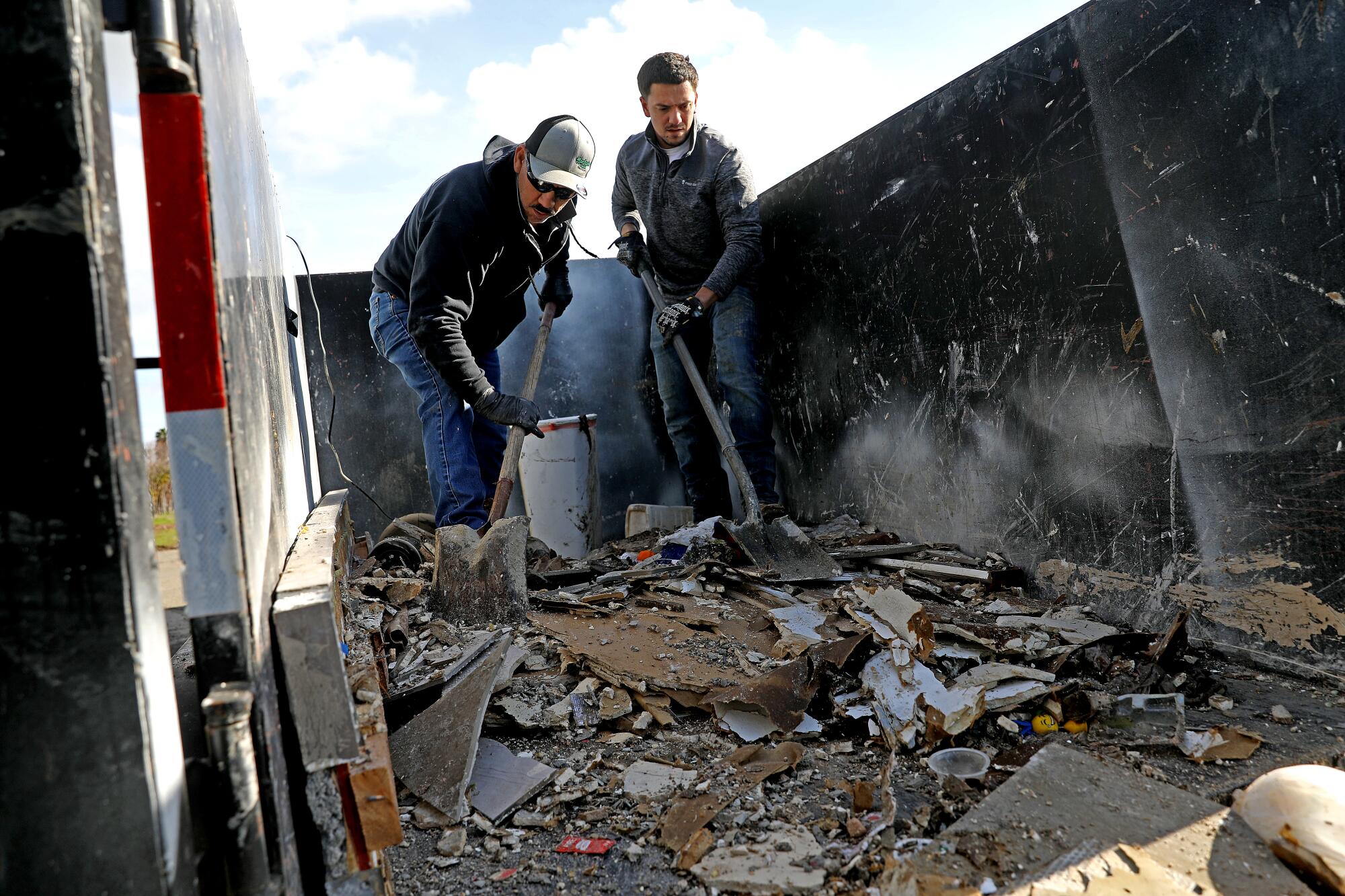
Those who needed to retrieve medication or a pet from their homes did so by deputy escort. A few residents who evacuated decided they wanted to go back to their homes, Oliver said, and officers warned them they could be risking their lives. But she said she could understand residents’ indecision.
“You spend your entire life to make this home into a home,” Oliver said. “You have possessions, animals and family members, and when something like this happens, I can’t imagine the amount of stress to decide whether to stay or go.”
One morning last week, 61-year-old Joe Avina drove his truck, filled with the waterlogged contents of his house, to a row of dumpsters in the middle of town.
There, he threw out the weather-beaten remains of a wooden dining room table, several dining chairs, kids’ toys and a twin-size mattress. It was the third time he had been there that week.
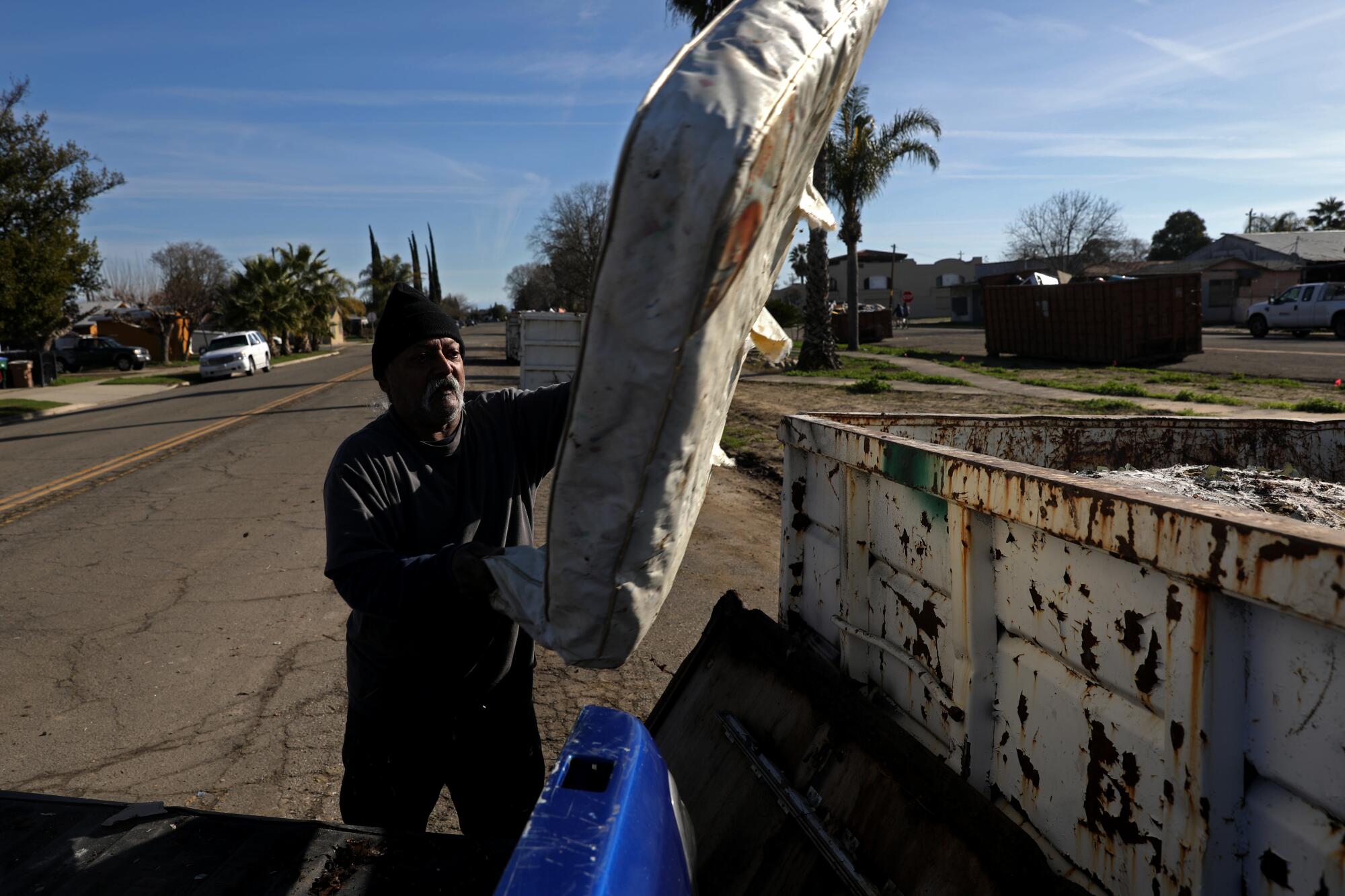
“It was pretty bad,” he said. “We have no table to eat on right now. It was literally underwater.”
The flooding also ruined the carpet and some of the walls. He was without power for more than two days.
Avina chose not to evacuate because he wanted to protect his home and possessions from possible thieves, he said. He was so worried that he’d be forced to evacuate that he hesitated to go get food. He drove a short distance, avoiding a main road, then made a long trek on foot in the rain for supplies.
“This hasn’t happened in the last 50 years I’ve been here,” he said. “This is the worst. It’s terrible.”
Other Planada residents spoke of their concern for their valuables as well as their pets.
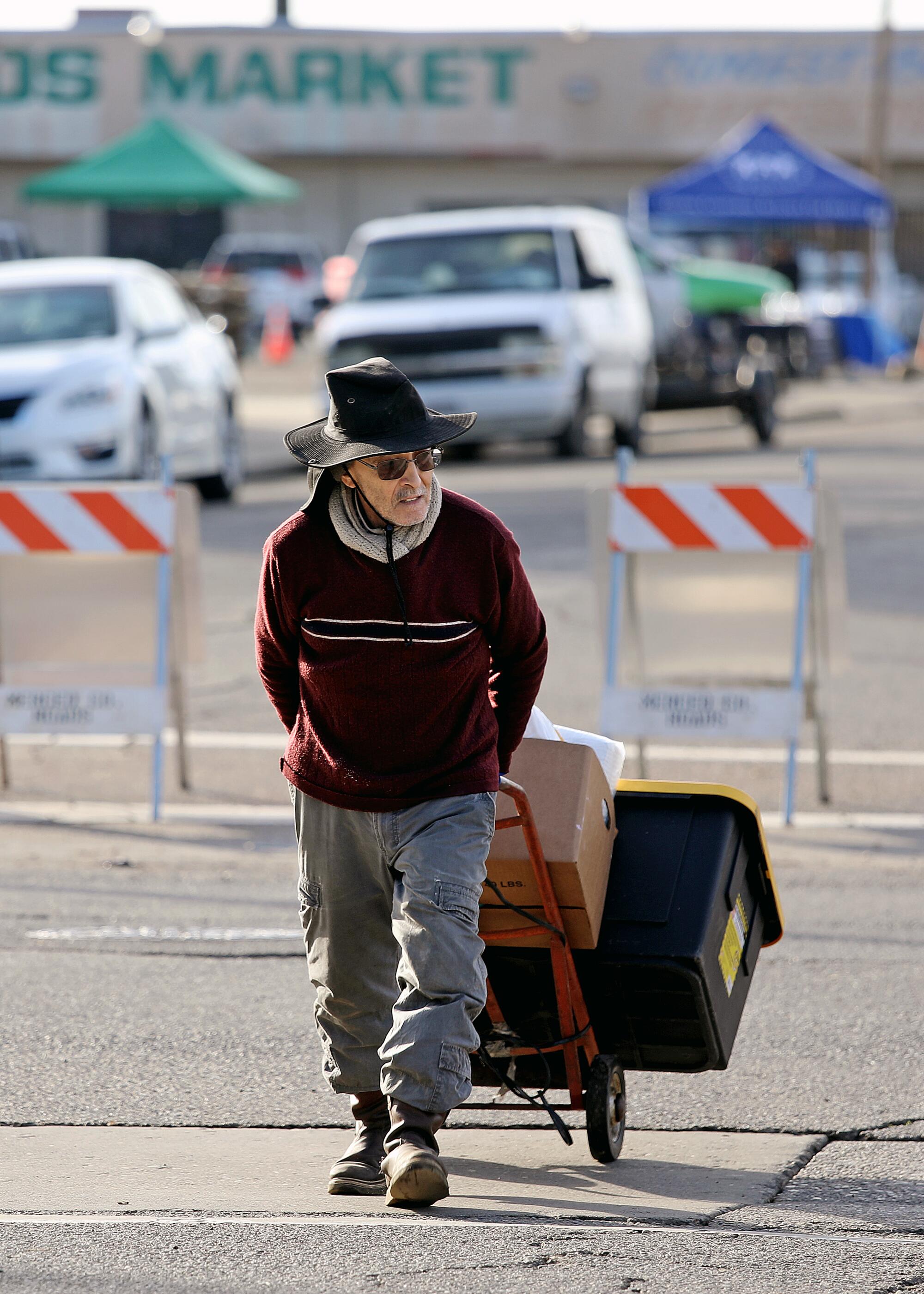
Vincent de Landa Jr., 69, was asleep when the flooding started; he woke up, looked out the window and saw a “lake” outside his house on Stanford Avenue.
“I got chills on my arms,” he said. “The hair stood up.”
De Landa jumped into his car and tried to outrun the flooding but got stuck on a street near his house. About 3 feet of water filled his car. He waded through the waters and made it back home to take care of his dog. His home is high enough that it didn’t flood, and he stayed there for the rest of the storm, even when the power went out, relying on canned chicken for food.
He said he was scared during the ordeal and prayed for the people living in harder-hit areas. In the wake of the disaster, he’s been volunteering at the Planada Community Center, helping distribute supplies and food to residents.
“I was concerned about the elderly people of Planada,” he said. “It came with no warning.”
Mario Cruz, 77, stayed in his house on Market Street as long as he could.
Cruz has lived in Planada since 1948. Floodwaters had already drenched his living room and kitchen, but he stayed behind to protect his property. He left after sheriff’s deputies started knocking on doors on his street, urging people to evacuate. Because it was no longer safe to drive, Cruz had to walk across the flooded drainage canal and was picked up on the other side.
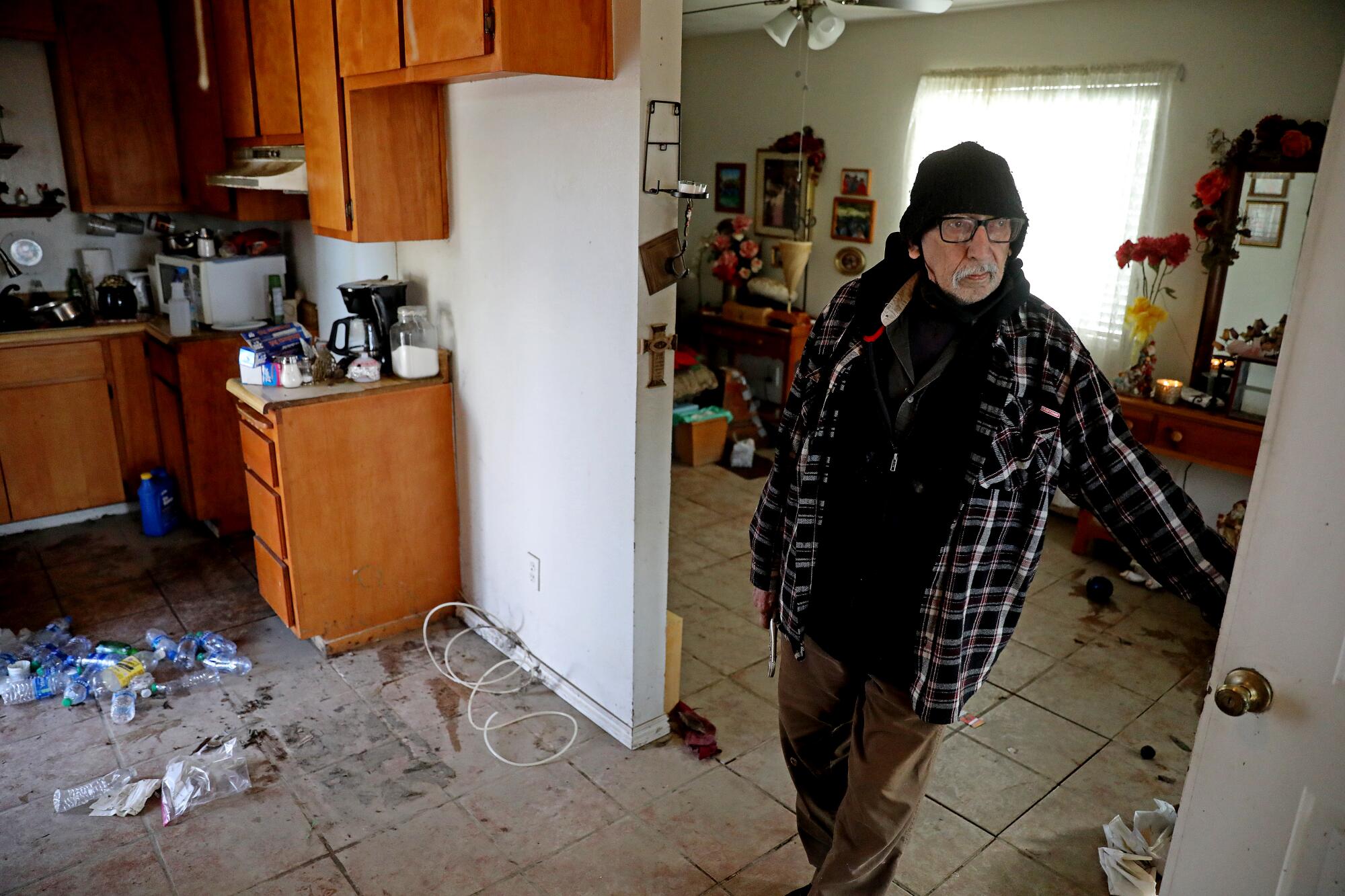
Last week, he had to throw out his couch, refrigerator, stove and several tables — anything that the water touched had to go.
Cruz’s neighbor Vidal Rosales, 49, also stayed in his house until the last possible second. Like many others in Planada, his family hadn’t purchased any flood insurance because they didn’t think they’d need it.
Rosales lives with his mother and brother in a four-bedroom home on Market Street. His sister is next door and his nephew lives in the house behind his. After the rest of his family evacuated, he tried to move furniture and other valuables to his nephew’s house, on higher ground. When the deputies from the Sheriff’s Office knocked on his door a second time, he finally decided to go.
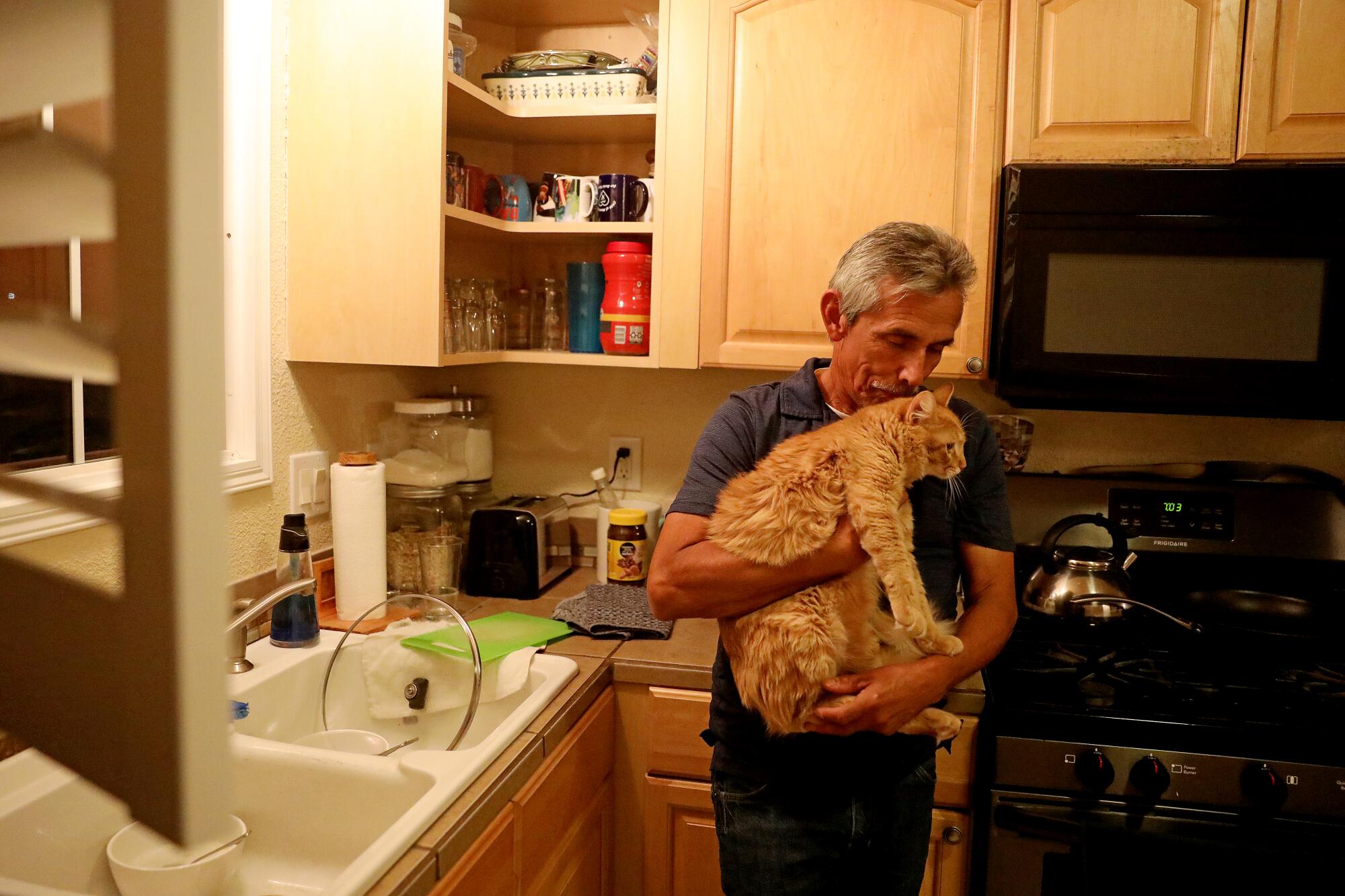
“My instincts told me I had to put everything up — tables, whatever I can,” Rosales said, adding that he wasn’t able to move the beds, couches, stereo, speakers and other large items. “They’re gone,” he said.
Like many other Planada residents, Gene Benavidez said he was scared for his property and that someone would break in. He and his wife stayed in their two-story house on Amistad Street to look after their dog and nine cats. But mostly, he said, he feels a strong emotional attachment to his home and the house next door, where he grew up and where his brother still lives. Both houses were hand-built by family members.
Benavidez, 59, said his parents moved into their first house, which they built themselves, in Planada in 1969. They wanted to build another house next door where they could grow old, so they took out a loan. Benavidez and his brother and father started building the house in 2010. His father died in 2011, but work continued on the house. After it was finally finished in 2017, Benavidez and his wife moved in.
“The fact that Dad left that legacy and was thinking of his kids and not of himself,” he said. “He said, ‘Whoever doesn’t have money in the family, if anyone’s having hard times, go ahead and live in this house.’”
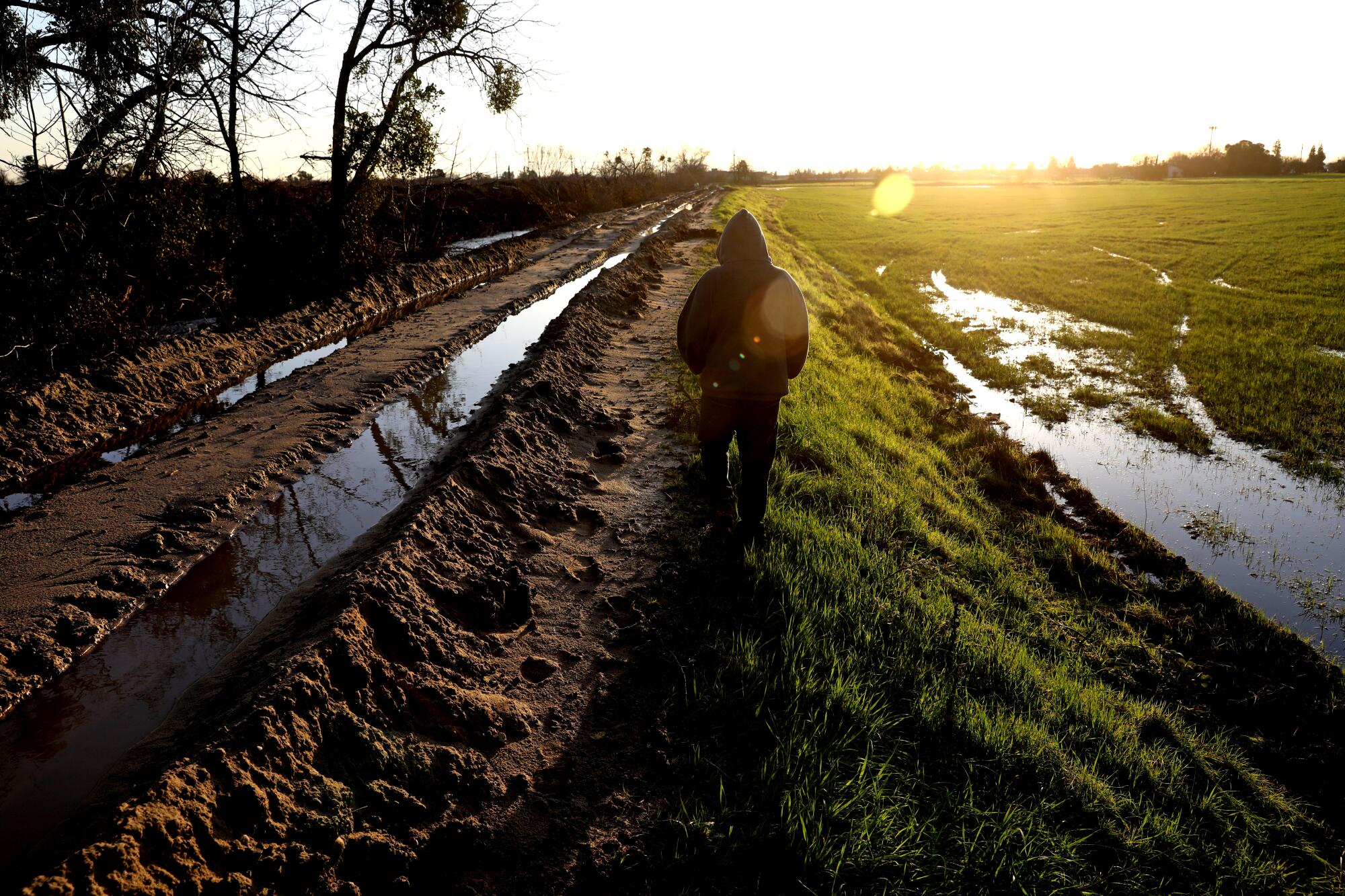
Renters across Southern California are facing flood damage caused by the recent series of storms. Here’s how they can protect themselves and their personal property.
More to Read
Sign up for Essential California
The most important California stories and recommendations in your inbox every morning.
You may occasionally receive promotional content from the Los Angeles Times.
